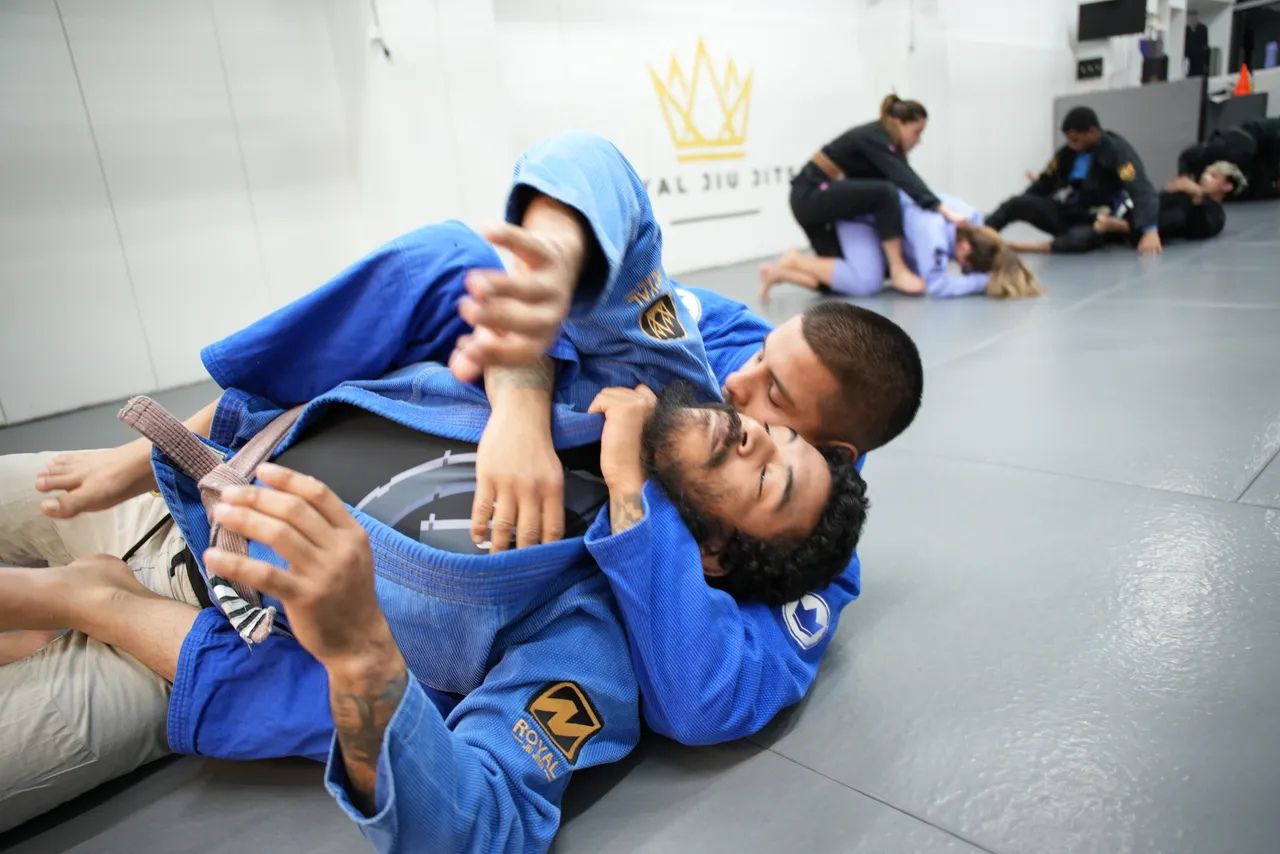
Brazilian Jiu-Jitsu is one of the fastest-growing martial arts in the United States, and its popularity is just as strong in New York.
From fitness enthusiasts to parents seeking structured programs for their kids, more people are turning to martial arts because it builds strength, confidence, and community. Yet one common challenge students face in training is cardio and endurance. The ability to keep going during long rolls or demanding drills often determines how quickly someone improves on the mats.
For those looking to begin their journey in Brazilian Jiu Jitsu Queens, Royal Jiu-Jitsu Queens provides a trusted environment for both adults and children. With experienced instructors and a welcoming community, students can develop their technique while building the stamina needed to thrive in this martial art.
This article explores how to improve your BJJ cardio and endurance, while also showing why training at a professional school like Royal Jiu-Jitsu Queens is one of the best investments in both fitness and personal growth.
Physical, Mental, and Social Benefits of Martial Arts
Training in martial arts is more than just exercise. At Royal Jiu-Jitsu Queens, students experience improvements in multiple areas of life:
Improved Fitness and Strength
Brazilian Jiu-Jitsu is a full-body workout. Rolling and drilling engage the core, legs, and upper body while also testing cardiovascular endurance. Unlike repetitive gym exercises, BJJ builds functional strength that applies directly to movement, balance, and real-world self-defense.
Increased Confidence and Self-Discipline
Stepping onto the mat teaches accountability, respect, and perseverance. Students learn to overcome challenges, celebrate progress, and carry that discipline into school, work, and personal life.
Self-Defense Skills for Adults and Children
One of the strongest appeals of adult Brazilian Jiu Jitsu and kids’ programs is practical self-defense. BJJ is designed to help smaller individuals defend themselves effectively, relying on leverage and technique rather than brute strength.
Stress Relief and Mental Resilience
The physical intensity of training is paired with mindfulness. Students often find that sparring clears their minds, reduces daily stress, and helps build resilience in the face of pressure.
Community and Relationship-Building
Beyond physical training, martial arts fosters friendships. Students train together, encourage one another, and become part of a supportive community—something that Royal Jiu-Jitsu Queens emphasizes in every class.
Why Cardio and Endurance Matter in BJJ
BJJ is unique compared to other martial arts because sparring, also known as rolling, often lasts several minutes. Unlike a short sprint of energy, success in rolling requires sustained effort, problem-solving under fatigue, and recovery between rounds. Poor cardio can cause students to rely on strength or give up positions early.
By improving endurance, practitioners can:
- Train longer without burning out
- Maintain sharper focus while tired
- Recover faster between rounds
- Reduce the risk of sloppy technique leading to injury
For students training at Royal Jiu-Jitsu Queens, building endurance means enjoying every class more and progressing at a steady pace.
Common Questions and Concerns Addressed
1. How long does it take to improve cardio for Brazilian Jiu-Jitsu?
Most students notice improvements in stamina within the first few months of consistent training. Progress depends on frequency, effort, and outside conditioning.
2. Can Brazilian Jiu-Jitsu help me lose weight while improving endurance?
Yes. Because BJJ combines strength, cardio, and high-intensity intervals, many adults find it effective for both weight loss and improving overall endurance.
3. Do beginners need special equipment for adult Brazilian Jiu Jitsu?
Beginners only need a gi or rash guard, depending on the program. Royal Jiu-Jitsu Queens provides guidance on what gear is best for new students.
4. How often should I train each week to build endurance in BJJ?
Training two to four times per week is ideal for beginners. This frequency allows steady progress without overwhelming the body.
5. Is cardio training outside of class necessary for martial arts Queens students?
While BJJ alone improves cardio, adding running, cycling, or interval workouts outside of class can accelerate endurance gains.
6. What makes Royal Jiu-Jitsu Queens a good place to build fitness and stamina?
The school combines expert instruction, structured programs, and a supportive community—helping students in Queens reach their fitness and martial arts goals faster.
How to Improve Your BJJ Cardio and Endurance
Improving endurance for BJJ is not only about running or doing push-ups. It requires a combination of sport-specific training, general conditioning, and recovery.
1. Train Consistently
The number one way to build BJJ-specific cardio is to stay consistent. Rolling multiple times per week helps your body adapt to the demands of grappling.
2. Focus on Interval Training
BJJ resembles high-intensity intervals: explosive movements followed by short rests. Interval training, such as sprinting or circuit workouts, closely mimics these energy demands and improves performance on the mats.
3. Incorporate Strength and Conditioning
Weightlifting and bodyweight exercises like squats, pull-ups, and planks strengthen the muscles used in grappling. Stronger muscles fatigue less quickly, helping preserve energy during long rolls.
4. Improve Breathing Techniques
Many beginners tire out because of poor breathing. Learning to breathe through the nose when possible and staying calm in uncomfortable positions conserves energy.
5. Roll with a Purpose
Instead of going full intensity every round, practice rolling at different speeds. Technical rolls at moderate pace build endurance while reinforcing good habits without unnecessary exhaustion.
6. Pay Attention to Nutrition and Hydration
Endurance isn’t built only in the gym. A balanced diet with lean protein, complex carbs, and proper hydration ensures the body has enough fuel to perform.
7. Prioritize Recovery
Sleep, stretching, and rest days are essential. Overtraining can actually reduce endurance and increase the risk of injury.
Data and Expert Insights
- A 2022 report from the Physical Activity Council found that over 6.5 million Americans practiced martial arts, with Brazilian Jiu-Jitsu leading growth among adults.
- Research published in the
Journal of Strength and Conditioning Research highlights that grappling-based martial arts rely heavily on anaerobic capacity, meaning interval-based conditioning is especially effective.
- According to the National Safety Council, martial arts injury rates are lower than those in contact sports like football or basketball, reinforcing its reputation as a safe and sustainable choice.
Local Relevance: Martial Arts in Queens
Queens, NY is one of the most diverse and active communities in the city. From families in Forest Hills to young professionals in Flushing, residents are looking for healthy, engaging activities. Training at Royal Jiu-Jitsu Queens connects students to a vibrant network of martial artists while contributing to overall wellness in the borough.
Programs at Royal Jiu-Jitsu Queens are designed to meet the needs of both kids and adults, ensuring that anyone searching for martial arts Queens finds a safe and effective place to train. Whether your goal is self-defense, fitness, or building lasting friendships, BJJ offers a unique path.
If you are ready to build your cardio, endurance, and confidence through Brazilian Jiu-Jitsu, Royal Jiu-Jitsu Queens is here to help. Our programs for adults and kids provide expert instruction in a welcoming environment right here in Queens, NY.
Start your journey today with a free trial class and experience firsthand why so many families and individuals are choosing BJJ as their martial art of choice.
Click here to schedule your free class at Royal Jiu-Jitsu Queens.


